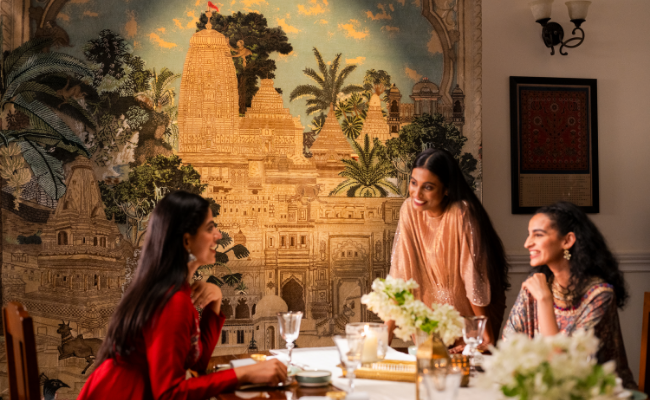
How traditional hand knotted rugs became Europe’s most precious possessions?
The emergence of carpets as a popular handcrafted possession
Rugs and carpets are a staple in our homes today because of the everlasting air aestheticism they add to our home décor. But did you know know that the marvellous furnishings held a different meaning and significance even just a few decades ago? Today, these furnishings are easily accessible, and are considered a vital element in order to enhance the appeal of our home décor. Take just 30-40 years ago as the timeline, and you would be surprised to know that it was not a common thing to adorn one’s home with carpets, especially the exquisite hand knotted ones. They were considered to be a symbol of social status, and were believed to be accessible only by a few influential homes and owners. This surely makes us feel better about today, doesn’t it? Luxury surely was only a matter of money in the past. Today, luxury is about the experience of a service, or a product.

The introduction of globalisation to various economies, including the Indian economy, brought in many positive changes when it comes to distribution of commodities, luxury, and wealth. The pre globalisation era witnessed that luxury and its associated goods such as carpets, were not easily available in every country or region. Those who were able to afford the high manufacturing and transportation costs due to the product’s exclusivity brought home these marvellous furnishings. On the other hand, the homeowners who could not afford the high end, hand knotted carpets that were primarily made in Western Asian region, resorted to the affordable handwoven Dhurries, or Flat weaves. These furnishings too were not used as symbols of status, but more as a utilitarian necessity as most cultures involved sitting on the floor for prayers, dining, and even educational purposes. Yes, beds and dining tables are western influences that also became a predominant consumer trend only post globalisation!
That being said, since the European regions were the ones where most of the world’s wealth was accumulated due to a number of social, economic, and political factors, Europeans were the first ones to adorn their spaces with these furnishings and start the trend and the trade of exquisite hand knotted carpets.Let us understand the story of how these carpets became so popular in the European cultures, and what makes them so special even today after all these years.
Popular carpets used in European palaces
Turkish carpets and Kilims
Turkish carpets are considered the most exquisite type of carpets in the segment of handcrafted carpets even today. Their history dates back to the nomadic roots of the Turks of Central Asia. Carpets were a strong influence in these tribes as they were travelling around the world, moving from one place to another, while also spreading their skills of craftsmanship in different regions they travelled to. These furnishings that were earlier a symbol of functionality became a vital decorative element in order to adapt to tents and surrounding environment. The oldest carpet known to humanity, Pazyryk, which dates back to 400 BC is a specimen of the history of Turkish craftsmanship being the oldest one.
Seljuk Carpets: Anatolian Early period carpets
Another popular category of carpets is the Seljuk carpets that date back to the 13th century. The few oldest ones are believed to be found in Alaeddin Mosque. These carpets found in the Seljuk empire era embody blue and red tones features arabesque motifs and kufic script. Kufic is a type of traditional design that features Arabic letters in straight and angular or geometric lines. These motifs are usually found on the edge of Seljuk carpets with pointy ends like arrows, and hook-like figures. The element that makes these furnishings so special is the type of knots that are used to craft this carpet. To craft this carpets, artisans usually use the Turkish method to tie the knots of its canvas which is called Ghiordes knot. It is a double knot style of weaving that makes the carpet durable and enhances its longevity.
When the famous traveller Marco Polo visited Anatolia, he noted that the most distinguished carpets were woven in Sivas and its surrounding region which he called Turkomanya. The city is now a beautiful region in central turkey in the Sivas province and district.
A century later, in the 14th century another traveller Ibn Battuta acknowledged and appreciated the Turkish artistry of handmade carpets, writing that the carpets were exported into all renowned trade centres of the world.
These noteworthy acknowledgements brought the attention of Europeans to the beauty of Turkish carpets. Many European traders began calling for and buying these carpets for palaces and homes of aristocrats. For the carpets’ glamour and grandeur, they became a primary choice for European consumers for whom the high prices were not a problem.
The influences were also seen in the paintings of renowned renaissance painters like Hans Holbein, Lorenzo Lotto, and Hans Hemling who used the carpets as a decorative element in their artworks. These paintings additionally popularised some of the most widely known Turkish carpets which can be found presently in the Turkish Islamic Arts Museum in Sultanahmet.
Usage in European palaces
Carpets that were crafted in Konya (Iconium), Kayseri (Cesaria), Usak (Oushak) and Bergama (Pergamon) graced the palaces of European dynasties for a long time. The trade was popularised when the Italian city states that controlled the sea trade from Istanbul to Europe made the trade a profitable job.
Hereke carpets
We have established by now that Turkish and Persian carpets were primarily used for adorning the palaces of various European emperors, rulers, and other influential masses. However these carpets gained popularity in their own region of origin in the 1850’s when Sultan Abdulmecid was about to move from his Topkapı Palace to Dolmabahce Palace, which was built for him in Bosphorus, Istanbul. He wanted the most distinguished carpets to adorn his palace and many big-sized workshops were hosted in the town of Hereke to assist the sultan with his search for the perfect carpet.
The Hereke region thus became a popular tourist destination because of this palace that even today features some of the world’s closest woven carpets. These 160 year old carpets rest peacefully in the grand halls of the palace, with tourists from around the world visiting to witness their beauty after all these years.
Turkish carpets and Kilims today
It is important to note that in every region, it was the rulers’ luxurious and lavish standard of living that brought the exquisite furnishings to that region. This sheds a light on how precious these handcrafted furnishings are mainly because of the work and skill of an artisan that goes into their making. A similar occurrence happened in India, when Emperor Akbar came to the country and called for the most exquisite furnishings from Persia to India exclusively for his palace. The craftsmen who visited India thus not only graced the Indian land with their impeccable creations but also taught their craftsmanship to the king’s subjects or the citizens of the Monarchy.
In the 21st century, accessibility, affordability, and craftsmanship has propagated throughout the world. In India itself, we can find carpets with intricacy, elegance and craftsmanship similar to the Turkish hand knotted carpets.
From Kashmir’s intricate traditional Mamluk rugs to the contemporary, traditional, and transitional rugs of Bhadohi, it is easy to say that today, we are kings and queens of our own homes, with an array of designs, materials, and textures available to us at the click of a mouse.
Know about the handmade carpet industry in India









